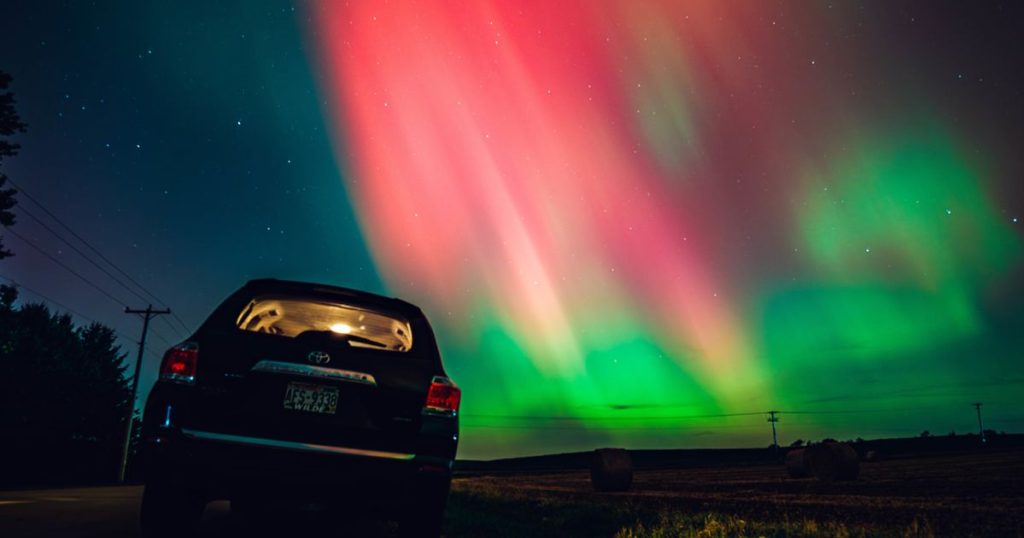Stargazers in the U.S. and Europe were treated to a rare sight when the northern lights appeared in skies much farther south than usual. This dazzling light show of pink, purple, blue, and green hues was seen in parts of England, Germany, and even as far south as Florida in the U.S., due to a powerful solar storm causing the aurora borealis to appear in unusually low latitudes. Typically, the northern lights are seen in regions around the Arctic Circle in the Northern Hemisphere, such as Canada, Alaska, and Scandinavia.
The northern lights are a result of geomagnetic storms in the Earth’s magnetic field, triggered by massive explosions on the sun known as solar flares. Particles from these solar flares interact with atmospheric gases, producing the stunning colored lights in the sky. While the lights are captivating, they can also have adverse effects on power grids, communication systems, and satellites in low-Earth orbit. NOAA has issued warnings to prepare for potential disruptions from the recent solar storm.
The best opportunity to view the northern lights was on Thursday in the northernmost U.S., with a possibility of another sighting on Friday in some regions. The current solar cycle, known as the solar maximum, is expected to peak in 2025, offering increased chances for auroras to appear in various locations. NOAA’s Space Weather Prediction Center has advised viewers to follow updates on their Aurora Dashboard website and social media for notifications on where the lights can be seen.
For those interested in viewing the northern lights, the best time is typically an hour or two before or after midnight from a clear, cloud-free area. Cameras are often better at capturing the lights than the human eye, so photography enthusiasts may have a better chance of documenting the spectacle. While the recent geomagnetic storm was rated a G4, with a G3 storm forecasted for Friday, sightings like the one seen in May, which reached a G5 rating, are considered highly unusual events.
Overall, opportunities to witness the northern lights could continue well into 2025 and potentially into 2026, as the solar activity remains heightened during the solar maximum phase of the 11-year solar cycle. While geomagnetic storms can present challenges for technological systems, they also offer a rare and beautiful celestial display for those lucky enough to witness the aurora borealis dancing across the night sky.


